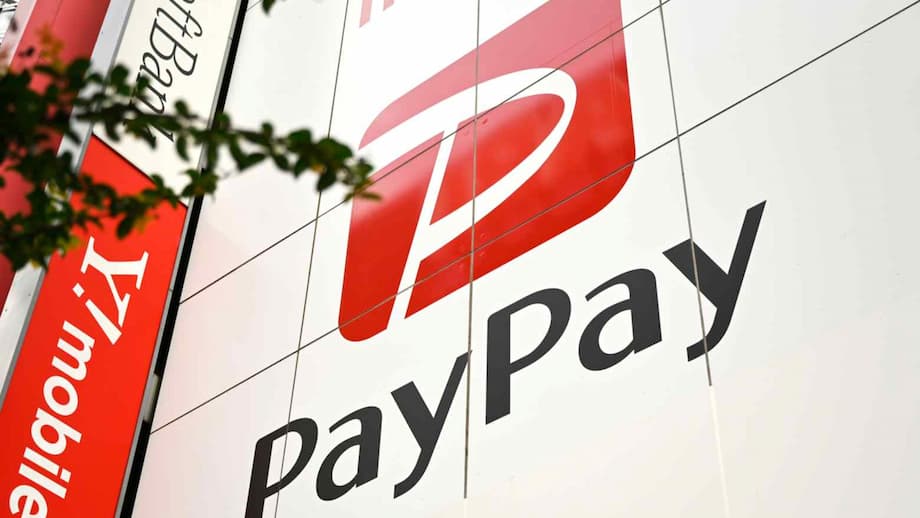Why this deal matters now
Japan’s PayPay will begin accepting payments from Weixin Pay (WeChat Pay) users at its merchant network across the country, opening a direct way for Chinese travelers to pay with the wallet they already use every day. The service is set to start in mid September 2025 and is designed to capture growing inbound demand from China while helping stores process foreign payments with minimal extra steps. The integration rides on HIVEX, a cross border wallet framework from TBCASoft that connects mobile payment ecosystems across markets.
- Why this deal matters now
- What is launching and when
- How a WeChat Pay user pays at a PayPay shop
- The tech behind it, HIVEX and TBCASoft
- Tourism trends driving wallet acceptance
- What this means for merchants
- How this fits into Japan’s payment landscape
- Security, compliance, and buyer protection
- Costs, rates, and operations
- What could be challenging
- At a Glance
Weixin and its international service WeChat count more than 1.4 billion monthly active users. Japan’s inbound recovery from China has strengthened through 2025. The Japan National Tourism Organization reported 797,900 visitors from mainland China in June 2025, a year over year increase of 19.9 percent. Making WeChat Pay usable at millions of PayPay affiliated merchants could turn that demand into more seamless checkout experiences and higher conversion at the register for retailers, restaurants, transport operators, and hotels.
What is launching and when
PayPay and Tencent’s WeChat Pay plan to switch on acceptance across PayPay’s nationwide merchant base from mid September. The timing aligns with a period when visitor traffic typically rises again for the autumn travel season and the year end holidays. PayPay has signaled an ongoing strategy to add more overseas wallets in Japan, and the WeChat Pay tie in is a headline addition given the size of the Chinese user base.
Launch window
Announcements from the companies and industry partners state that activation will occur in mid September 2025. WeChat Pay users will be able to scan the PayPay QR code at checkout, authorize in their app, and complete the purchase in seconds while PayPay settles with the merchant in yen. PayPay highlighted the role of HIVEX in enabling the switch on across a very large set of locations with common rules and streamlined integration.
Where it will work
Coverage extends to millions of PayPay affiliated merchants across categories such as convenience and specialty retail, food and beverage, attractions, taxis, and lodging. That breadth is a draw for travelers who want predictable acceptance without switching apps or handling cash across different stores and cities. PayPay says the network will continue to grow and the WeChat Pay integration will be part of the same store experience staff already use for domestic PayPay QR payments.
How a WeChat Pay user pays at a PayPay shop
The experience is familiar to anyone who has used a QR code wallet in Asia. At checkout, the cashier presents a PayPay QR code stand or a code on a terminal screen. A customer opens Weixin or WeChat on their phone, selects WeChat Pay, and scans the PayPay QR code. The amount appears inside the WeChat Pay app. The user confirms the payment with a passcode, biometrics, or device method. A confirmation screen then appears for both the buyer and the merchant.
Step by step at checkout
Behind the scenes, HIVEX translates the payment request from the PayPay QR format into a WeChat Pay authorization. The customer is charged in their home wallet currency. The merchant receives funds in yen through PayPay in the normal settlement cycle. Currency conversion happens automatically based on the participating networks’ rules, so the traveler does not need to exchange cash or worry about carrying the right bills and coins.
Refunds and receipts
Refunds and voids typically follow the initiating rail. A return processed by a PayPay merchant would flow back through HIVEX to WeChat Pay and credit the customer’s wallet, matching the reference for the original sale. Receipts and transaction history remain viewable inside WeChat Pay for the traveler and inside the PayPay dashboard for the merchant. Operators should expect staff procedures to be similar to a normal QR return, with no special hardware required beyond existing PayPay materials.
The tech behind it, HIVEX and TBCASoft
HIVEX is a framework run by TBCASoft that links mobile wallets across countries and brands. The service provides common business rules, technical connectors, and consistent branding so that a payment originating from a foreign wallet can be routed securely and reliably to a local merchant’s acquiring network. For PayPay and WeChat Pay, HIVEX acts as the bridge that maps QR keys, validates requests, and returns authorizations in near real time.
Company statements from TBCASoft describe the goal as making global mobile wallet payments work in a way that feels native to both sides of the transaction. Ling Wu, the chief executive of TBCASoft, framed the collaboration as a way to create tangible value for stores and visitors.
Ling Wu said, “This partnership brings together three market leaders Weixin Pay (WeChat Pay) in China, PayPay in Japan, and HIVEX to create a powerful proposition for both travelers and merchants.”
The HIVEX approach reduces the need for each wallet and acquirer to integrate one by one. Instead, a single connection to the framework can unlock acceptance from multiple partners that follow shared rules. For merchants, that means more foreign customers can pay with their own wallet while the store continues to see a standard PayPay transaction.
Tourism trends driving wallet acceptance
Japan’s inbound travel has rebounded with vigor through 2025. PayPay’s announcement cited record visitor levels for July and a first half tally that surpassed 20 million visitors faster than any previous year. The number of inbound travelers from mainland China exceeded 4.71 million in the first six months of 2025, up 53.5 percent from a year earlier. JNTO’s monthly breakdown shows China as the largest inbound market in June, with spending powered by retail, dining, and travel related purchases.
More traffic is likely as the Osaka Kansai Expo approaches, along with the leaf viewing season in autumn and peak year end travel. Wallet acceptance that maps to visitor preferences often correlates with higher average order values and smoother checkout lines because travelers are not fumbling with unfamiliar cash or card prompts. That is the behavior PayPay and WeChat Pay aim to capture.
What this means for merchants
For stores, cafes, attractions, and hotels, the change is about making it easy for more visitors to say yes at checkout. The PayPay QR flow and settlement do not change, staff training is light, and the customer sees their familiar wallet interface in simplified Chinese inside the WeChat Pay app. Merchants can add signage that highlights WeChat Pay acceptance alongside the PayPay logo to improve visibility for tourists.
Benefits at a glance
- Serve WeChat Pay users without new hardware or extra apps, using the existing PayPay QR code.
- Settle in yen through PayPay with standard reconciliation and reporting.
- Reduce friction at checkout for Chinese travelers who prefer QR wallet payments.
- Rely on HIVEX rules and routing for a consistent experience across many foreign wallets.
PayPay has steadily built a wider inlet for overseas wallets since 2018. According to the company, users of 26 services from 14 countries and regions can now pay at PayPay merchants. Examples include Alipay, AlipayHK, Kakao Pay, Toss, NAVER Pay, GCash, TrueMoney, Kaspi kz, Tinaba, JKO PAY, Bluecode, Touch n Go, and others. The WeChat Pay integration plugs into that same pathway, expanding reach to a very large base of Chinese users.
How this fits into Japan’s payment landscape
Japanese consumers use a mix of cards, contactless taps, transit cards, and app based QR codes. PayPay helped popularize QR payments domestically by giving small merchants a low cost way to accept smartphone money without a dedicated terminal. Tourist focused streets and malls often show clusters of logos for domestic QR wallets and foreign wallets like Alipay. The WeChat Pay addition through PayPay means many of those storefronts can now say yes to both groups with one QR sign.
For travelers, using their home wallet lowers language barriers and reduces the chance of mistakes with unfamiliar prompts. For stores, QR acceptance limits the time at the register and avoids the need to manage lots of cash during busy periods. Given the size of China’s traveling population and the habit of paying by phone, acceptance can be a competitive advantage for merchants in popular districts and tourist routes.
Security, compliance, and buyer protection
PayPay underscores that its services operate under Japan’s financial rules and registration regimes. The company points to measures that aim to protect users, including compensation schemes for unauthorized payments. Because HIVEX and WeChat Pay sit on their respective licensed rails, transactions are designed to meet the compliance standards required in each market.
For shoppers, the key practical aspect is that payment authorization happens inside the trusted WeChat Pay app. For merchants, the familiar PayPay settlement process and reporting continue to apply. The shared business rules in HIVEX help ensure consistent treatment of transactions, from authorization to settlement and dispute handling within the participating networks.
Costs, rates, and operations
The companies have not released a public grid of fees for this specific setup. In general, merchants can expect PayPay settlement in yen and WeChat Pay users will see a charge in their home wallet currency. Exchange rates and any wallet level fees are determined by the participating networks. Stores should review their PayPay merchant materials for acceptance rules and staff guidance on identifying and handling WeChat Pay transactions that flow through the same QR path.
Operations at the till should mirror PayPay’s standard QR process. That includes presenting the QR stand, confirming the amount on screen, and watching for the payment complete indication. Staff training can focus on simple scripts for travelers, such as pointing to the PayPay QR and saying that WeChat Pay is accepted. Signage in Chinese can help too, especially in districts with heavy tourist flow.
What could be challenging
Any cross market payment link brings practical questions. Stores and visitors will want clarity on exchange rates shown in app, refund timing when a return is processed after a traveler leaves Japan, and how customer support works across time zones. Connectivity at crowded venues can slow QR pulls, so merchants may want to place QR stands where signal is strongest or ensure Wi Fi coverage near the cashier. Staff should also know how to fall back to another method when a phone battery is low or a scan does not resolve on first try.
Settlement timing, chargeback rules, and dispute flows are governed by the participating networks. Merchants that use integrated point of sale software should check that their system labels these transactions clearly for end of day reconciliation. Travelers may want to keep digital receipts for duty free paperwork or expense claims, which are available inside their WeChat Pay transaction history.
At a Glance
- PayPay will let Weixin Pay (WeChat Pay) users pay at millions of PayPay affiliated merchants across Japan, with service starting in mid September 2025.
- HIVEX from TBCASoft connects the two wallets, translating PayPay QR scans into WeChat Pay authorizations and routing settlement back to merchants in yen.
- Weixin and WeChat have over 1.4 billion monthly active users, and China was Japan’s largest inbound market in June 2025 with 797,900 visitors.
- The integration targets rising tourist demand ahead of the autumn season, the year end holidays, and the Osaka Kansai Expo.
- Merchants keep their existing PayPay flow. Travelers pay in their home wallet currency without currency exchange or extra apps.
- PayPay says 26 overseas wallets from 14 countries and regions are now usable at PayPay merchants, with WeChat Pay joining that list.
- Security and compliance rely on licensed rails. PayPay highlights protections such as compensation for unauthorized payments.
- Questions remain on the usual items like exchange rate display, refund timing, and how individual systems present these transactions in reports.
For the official announcement from PayPay, see the company’s press release here.




